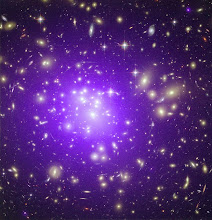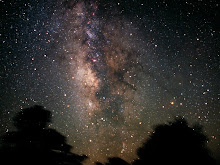Since the telescope was invented, and particularly since rockets and space flight, measurement and gauge of objects apart from Earth has been fast and accurate. It was fast because it was urgent. Understandably, mankind had been concerned about the possible danger to Earth of organisms or even invasion from intelligent species that might inhabit the other planets of the solar system. From ancient time until recently that was a legitimate concern, and so the initial exploration of the solar system was made as quickly, comprehensively and detailed as possible considering the time constraints and formidable technical challenges.
Fortunately, the capability of instruments alone, without manned missions, proved to be far better than had been imagined prior to the development of computers. The result is that the sober and prudently reasonable probability of significant life on any other planet or object in the solar system has been reduced to so close to zero as to make it worth considering as actual zero in the balance of assets and liabilities for the Earth; in the balance of risk and reward; and in the analysis of cost and benefit for deeper concern.
The possibility of micro-organism life has not been ruled out completely, although in the absence of importing such organisms to Earth, that too appears to pose no danger to Earth.
In fact, only a very small number of places in this star system appear to be capable of supporting any life at all, even micro-organisms. This is much smaller number than was thought possible in the 18th century when most of the 1950’s fear or at least serious concern, was raised. The Moon and Mars are likely to be, for a very long time, the only places human beings can actually visit unless manned flights to asteroids or moons of other planets are considered. Mercury and Venus have temperatures forbidding human exploration for centuries, possibly much longer. Phobos and Deimos, the two tiny moons of Mars, are so small and airless they are present essentially no interest. This is also true of every other moon in the solar system except a small number of moons at Jupiter, Saturn, Uranus and possibly Neptune. The great gas planets are of literally nebulous concern. Their ten, thirty, 85 and 165-year orbits have been used for a long time in power struggles between and within nations, and these struggles should be stripped bare of deceit for the entire population of Earth.
The cost of much intense further exploration of the solar system is thus rapidly diminishing in comparison with the value that is certain to be attained on serious large scale consensus of what the existing measures of the solar system actually mean for Earth and its peoples.
As long as concern is raised that further space flights of exploration, adventure, and determination of exotic threat from beyond Earth is worrisome, the result will be to dissuade human beings from drawing proper sober, practical conclusions that are already possible and necessary.
Space flight within the solar system will always be possible, but because of its monstrous cost, it should be carefully evaluated on the basis of its necessity, particularly where other more mundane yet vital necessities exist.
Even Earth-orbit flight is being reviewed more carefully, because the number of objects in earth orbit has become so large as to constitute a junk and litter problem, which arose recently in a collision between two satellites. A more conservative approach is welcome in all aspects of space flight, and though the earth-orbit systems have proved their worth in communications, weather and global positioning services which all have returned the cost of their launch, Earth orbit has become sort of a nonrenewable zone that must be allocated carefully to serve the most vital needs.
A nasty hard line only too easy to encounter in this kind of reasoning, is the problem that while the population of human beings already strains the planet and is estimated by some to be beyond the planet’s carrying capacity, some populations are in conditions of famine, plague and violence. This contrast makes Schadenfreude almost unavoidable, and in this context glaukenstucken is almost unavoidable as well.
Yet the simple truth is that procreation is quite capable of going far beyond reason. Examples of plague and infestation are legion, including locusts, frogs, bubonic plague, smallpox and others by the hundreds. Human beings do not want to make of themselves a pestilence on or in a planet which they understand. This is the terrible contradiction of the times.
In other words, while correct conclusions are already possible regarding the solar system, solutions to the problems Earth already faces are not yet attainable without great cost and determined undertaking. More struggles to determine more about the solar system in the vanishing hope of finding significant life on other celestial bodies, and struggles to find other problems from space, are only diverting attention away from serious problems already existing and well known here on Earth. Determination to spend huge sums on space flight at this time can be called a symptom of escapism.
Because of the intensity of Earth’s problems such as population pressures, destruction of Earth’s wild living species with the attendant killing of sentient beings, and other development factors such as the proper long-term evolution of cities, architecture, and human systems, conclusions of this sort are vital.
They should be drawn up among international consultants, probably in cooperation with other responsible organizations, and with the guidance of persons expert in the better doctrines of knowledge available today. This is not, of course, a place where casual reckoning will suffice even though many of the most carefully reasoned conclusions are likely to be common-sense. They will in that case be ever so much more gladly welcomed by the world’s people, and they should be surprising to few.
Good and honest conclusions should be drawn about which factors beyond Earth are likely to remain unchanged for long periods of time, such as millions of years, and which are capable of posing any new situations for Earth. For instance, every sign exists that the Moon and Mars will be essentially unchanging throughout the next two hundred fifty million year Galactic cycle; that the same is true for all the other airless bodies in stable orbits; and that even other bodies such as Jupiter and Saturn, which have thick atmospheres, are not likely to present disruptive events in the foreseeable future, possibly on the galactic time scale as well. In any case, such future events of that kind as exist are not predictable and it will be possible to address them only when they occur.
Much valuable work already exists, on the other hand, regarding those factors in the solar system which, usually because of orbital paths, might pose problems to Earth. The main ones are the Near Earth Objects, for asteroids large and small pose measurable dangers from collisions with Earth. Meteor crater in Arizona is a good example. Development of programs to catalog such objects and determine the danger they present is already well under way, needs continued funding but not seriously strange new paths of research, and is important.
In other words, the accurate determination of what Earth needs to know is already either complete in preliminary yet assuring status, or is ongoing. But it is confused with a great deal of hype, jingoism, speculation, exploitation, graft, boondoggling, advertising, and venture capitalism that is often in not only relentless pursuit of profits, but is callous in its approach to the cultivation of Earth as the only planet that will positively present a sanctuary for life for a long, long time. Principles which conceivably might permit flight to the stars continue to exist only in the imagination, and could be cosmologically forbidding for many generations – possibly many thousands of years, or more. Already it is known that even with fusion powered ion or photon rockets, the mass ratio of a vehicle capable of reaching even the nearest star is extremely far beyond technological feasibility. Whatever science might permit flight to other star systems is not even conceivable yet.
Like a band of travelers finding themselves on a small but habitable island, which walks around it three or four times and swims to a half dozen rocks lying offshore, yet remains reluctant to admit it is where it is for years. Eventually it begins to find that time has passed; its member remain alive and the convincing fact is that they are surviving and more, even managing to make themselves comfortable at the slight cost of discarding much of what they thought were essentials of civilization. Soon they realize they have become much like islanders everywhere since the dawn of time, and will live. Presuming of course only that they are a mixed company.
So it is to be expected that in the light of correct assessment of the situation Earth faces in the solar system and truly expected future, there is to be a general devolution of civilization to some extent. Just what this means is not clear, nor is it clear that the best course will be obvious without a good deal of presentation of the problem to the world or at least to the American public. Yet the world is in desperate need of the best possible determination. What it needs is for good problem-solvers to step forth and speak to the issue. This will include political leaders of experience, honesty, good faith and sound judgment, as well as the testimonies of persons who have been in space.
Fortunately, the latter includes persons of widely diverse range expertise and viewpoint. The dialogue should be international. Even if some player nations insist on maintaining theirs is the only solution, they should take opinions from all the world into account. The primary points of the resulting “planetary doctrine” should be a relatively small number of salient facts, with an emphasis on dealing, in the light of those facts, with several major and intense problems which are already well known.
Known problems probably span the field of all Earth’s eventual problems fairly well. In other words, while problems are certain to arise, they are not often to be of an unusual kind.
Examples of known kinds of problems include weather, earthquakes, volcanoes, tsunami, violence, economic instability, disease and plague, accident, economic inequality, over population, destruction of the habitat of Earth, the killing of sentient creatures, pollution and others.
Assets should be assessed candidly and realistically as well. This is not unlike the small island scenario. Assets include ancient and traditional technology, some of which already is or may be increasingly returned to prevalent use; new technology, some of which may be kept and developed, others of which may be abandoned; and future technology, of which development should be significantly sustained on the basis of existing need for it.
The existing consciousness of Earth suffers only from too much complexity and an unwillingness to distil the menagerie of ideas toward a comprehensive statement of fact that is not too much a bourgeoning plethora of opinions and represents the essential necessary and sufficient facts that will be considered equally important a hundred or thousand years from now. All the good ideas seem to be flowing already among a vast flood of information from which they are difficult to extract.
Subscribe to:
Post Comments (Atom)







No comments:
Post a Comment